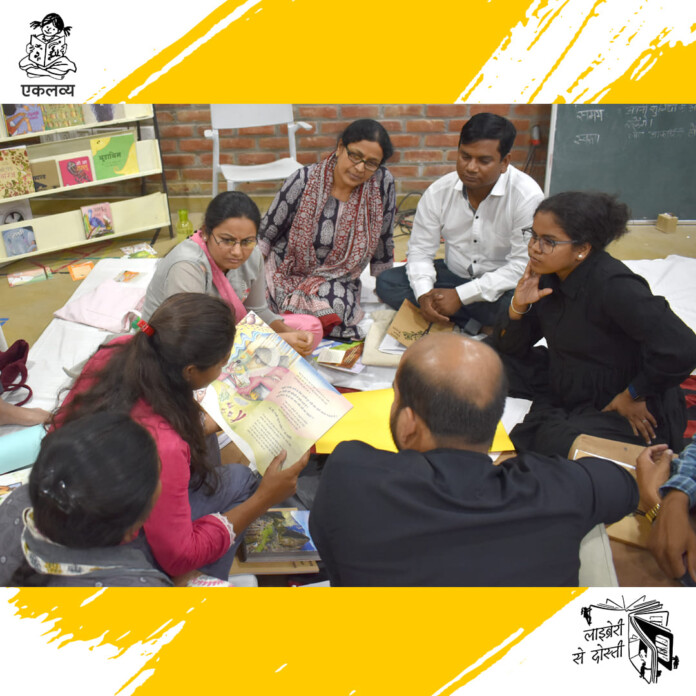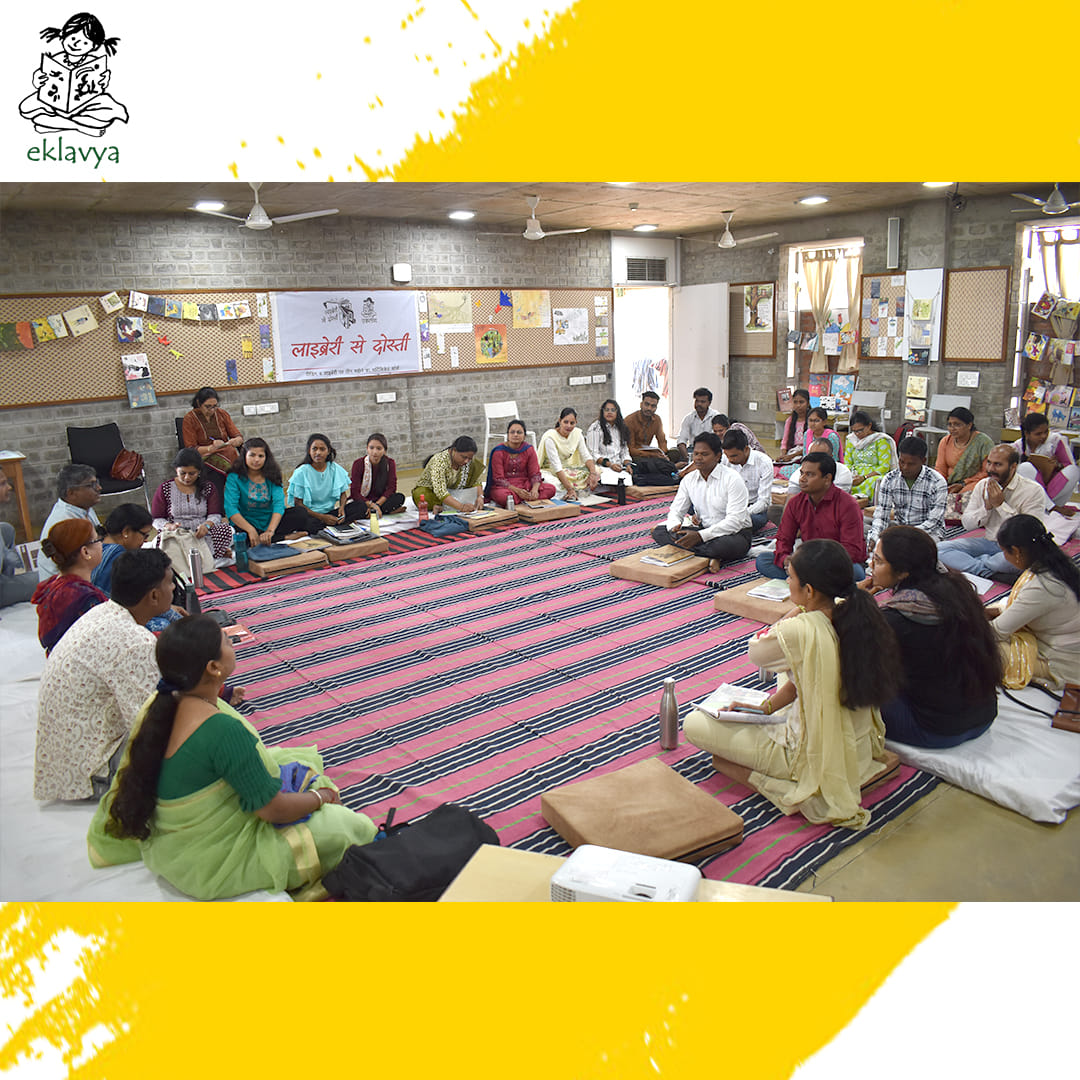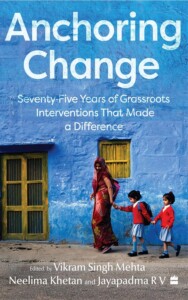Eklavya Foundation, was set up in 1982 to seed and develop academic programmes for curricular change in elementary education at the micro level and to mainstream these programmes through government and non-government agencies. It was driven by the need to change a dormant education system and address the triangle of equity, quality and quantity in relationship to education. The Hoshangabad Science Teaching Programme (HSTP), initiated by Kishore Bharati and Friends Rural Centre in middle schools in Hoshangabad district of Madhya Pradesh, heralded the beginning of Eklavya.
The context in which Eklavya started was of mainstream education being fraught with multiple maladies of rote learning and top-down, didactic teaching. The classroom offered no scope for children to bring their knowledge and interact with each other or with the teacher, nor any avenues for teachers to learn and innovate. Eklavya has worked to alter this and to simultaneously develop platforms of interaction among children and teachers to create shared learnings and a sense of togetherness.
Working towards a society that cultivates open-mindedness and creative, independent and scientific thinking, Eklavya is known for its work on reforming educational processes in the country, its vast body of publications and for setting up forums and structures for interaction among those concerned with children’s education. The working principles drawn from this experience include:
- Teachers are as central to the classrooms as the students. Most have vast experience and wisdom, and can make learning possible if guided appropriately, supported in their efforts and given the agency and space to design how learning happens.
- Children can and want to learn; they have the capability of finding meaning in and learning from all situations.
- The life experiences, understanding, wisdom, language, culture and knowledge that children bring to classrooms needs to become the foundation of learning.
- There needs to be more emphasis on developing learners who are curious, capable of learning on their own and excited to learn instead of focussing on just content delivery.
- Assessments of learning need to happen concurrently, and not only at the end of the term/year; they must also be holistic and participatory in nature.
- Classroom materials are a gradually evolving process; they need to be developed through active engagement with schools and students, and support from teachers.
- Structural and functional hurdles that obstruct the possibility of reform must be addressed simultaneously.
HSTP, at the point of closure of the intervention in public school system, was being implemented in over 1,000 schools in thirteen districts. By evolving simple locally available science kits with help from teachers, HSTP demonstrated that science could be taught well even in ordinary rural schools. It showed how systems for continuous learning for teachers and the programme itself could be set up, and how teachers could be supported in their classrooms.
‘Prashika’ an integrated and holistic primary school programme emphasized the use of home languages of children in classrooms. Its elements and imprint can be seen in many books and syllabi across the country, including in NCERT materials.
The pedagogy for the social science programme encouraged dialogue and discussion in the classroom to enable rational ethical development and thinking about choices. These foregrounded constitutional values were imbued with a spirit of humanism.
These principles, materials and methods—and those who participated in their development—have continued to inform efforts at educational reform across India. It is not as if these were original ideas in education, but more that the stated desirable ideas were concretised pragmatically and put into operation, thus making them pathfinders.
Eklavya’s work in schools brought into focus the fact that a school is located in a social space. Children spend far less time in school every day than they do outside it, and they need spaces for interaction away from schools. The same applied to teachers, as their training sessions and meetings were not conducive to free interaction among them. Discussion forums for teachers and children’s clubs were set up to be platforms of meaningful interaction.
The work with schoolchildren revealed the dearth of study materials for students. Starting with a monthly magazine on science for children called Chakmak, Eklavya’s publications expanded to include periodicals for teachers (Sandarbh) and for the general community on the confluence between science and society (Srote), along with a variety of children’s books. It has also worked on ensuring these materials reach children through libraries, fairs and their schoolteachers.
Eklavya started a postal forum called ‘Sawaliram’ to respond to questions from children arising from the classroom or from their outside experiences. The intention was to help children develop the confidence to ask questions and also to continue a dialogue around the responses. The handwritten responses to each individual writing were a source of great joy for the receiver, and were often read out loud in the Chakmak clubs.
Changing Trajectories
The 1970s and early 1980s saw enthusiasm and desire to create change spawning several groups imbued with a sense of purpose and energy. The period saw the promotion of science and the development of a scientific temperament as a harbinger of rational understanding. In 1981, a special meeting was called by the Planning Commission to discuss the idea of setting up Eklavya. In response, the Department of Science and Technology, Department of Education at the central and state levels came forward offering full financial support for Eklavya. This helped Eklavya build a robust core team, programmes and a set of principles, along with in-depth capability in selected areas.
The government’s attitude toward NGOs started changing in the 1990s, and this caused a lot of churning within Eklavya. This led to adjustments in the geography of its work as well as the direction of evolution of the programmes and, to some extent, the organization’s structure also changed. The developments also led alternative avenues and methods of reaching students and teachers being explored. Structures and forums outside the school—such as the Shiksha Protsahan Kendras, reading rooms, voluntary teacher groups, children’s fairs and learning activities with adolescent children—emerged, as did collaborative support to organizations that wanted to work in education.
The 2000s brought more intense resistance to external intervention in the public education system, leading to the curricular programmes being stopped abruptly in 2002. This led Eklavya to develop other streams of work, such as partnering in an advisory role with SCERTs and government education departments in different states.
Eklavya had to revisit its initial vision of the ‘change theory’ from ‘micro to macro’ when, within a few years, it became clear that the theory was not working on ground. Interventions are not planned packages that can be automatically scaled up, as they require motivation, conviction, ownership and a personal stake. An understanding of what is needed and is possible in a certain context can come only from the opportunity to explore, experiment, make mistakes, learn from them and reconstruct the model and its strategy. What can be retained are the key principles of functioning, but many details would emerge from the ground through collaborations of shared ownership and mutual respect.
This blog is a summary of a chapter written by Hriday Kant Dewan and Tultul Biswas in “Anchoring Change: Seventy five years of Grassroots Interventions that Made a Difference” edited by Vikram Singh Mehta, Neelima Khetan and Jayapadma RV, published by Harper Collins India. The book is a recipient of the GLF Honour Award 2023.
The chapter summary has been prepared by Jayapadma RV.












